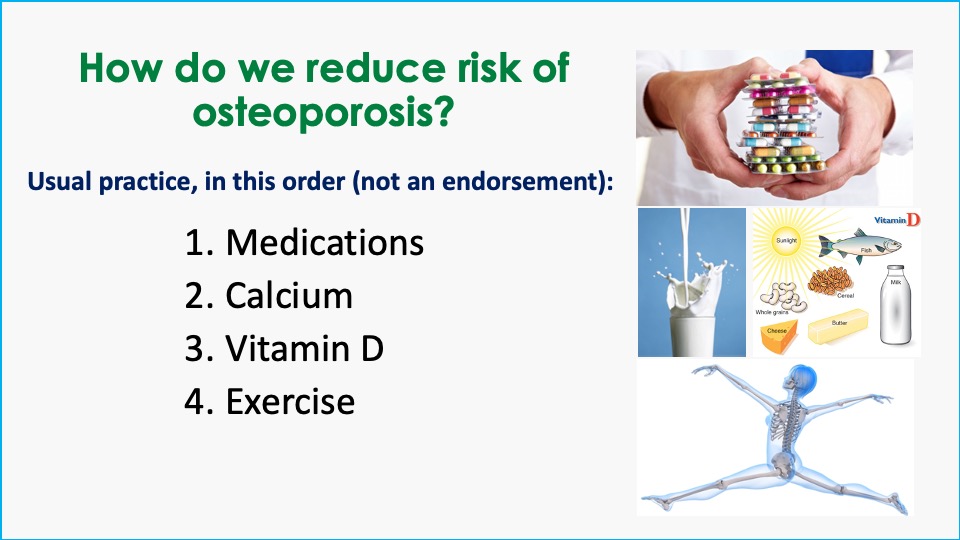Osteoporosis. Presented by Professor Belinda Beck
A staggering two thirds of Australians over the age of 50 years have osteopenia or osteoporosis. Many of our clients sit in a demographic which put them at high risk eg. post-menopausal women, coeliac disease, long-term use of steroids, eating disorders.
The usual medical management of osteopenia/osteoporosis is in this order (usual practice, not an endorsement):
- Medications. These are helpful but the compliance after 1 year is 50%, around 40% of people are ‘non-responders’ and the side effects can be significant.
- Calcium and Vitamin D. As we know, vital for bone health, but unless they are deficient, increasing them won’t improve bone mineralisation.
- Exercise. Belinda’s group at Griffith University conducted the first study which showed that high intensity exercise effectively increases bone mineral density in people with osteoporosis and is safe if properly supervised.
This research is game changing. At last people with low bone mineral density have a lifestyle modification which can be used for effective treatment. Belinda explains it’s not just any exercise. It needs to be the correct intensity, loading and be safely supervised.
Osteoporosis Australia has rebranded as the more optimistically sounding Healthy Bones Australia
They provide advice about safe and effective exercise programs for your clients with osteoporosis.


Belinda Beck is a Professor in the Griffith University School of Allied Health Sciences (Gold Coast, QLD) and the Menzies Health Institute Queensland. She leads the Griffith University Bone Densitometry Research Laboratory and is Director of The Bone Clinic, a novel translational research facility and clinical practice providing supervised exercise for patients with osteoporosis. She graduated from The University of Queensland (BHMS[Ed]) and the University of Oregon (MSc and PhD) and completed a postdoctoral research fellowship in the Stanford University School of Medicine (CA, USA). Her work, primarily related to the effects of mechanical loading on bone, has involved both animal and human models, from basic to clinical research. Her particular focuses have been exercise interventions across the lifespan for the prevention of osteoporotic fracture, and the management of bone stress injuries in athletes and military recruits. Important recent projects have included the LIFTMOR and LIFTMOR-M trials; results of which have shown that high intensity exercise is not only effective but safe as an intervention for older men and women with low to very low bone mass.
To register for the presentation and associated documents including the assessment quiz click here